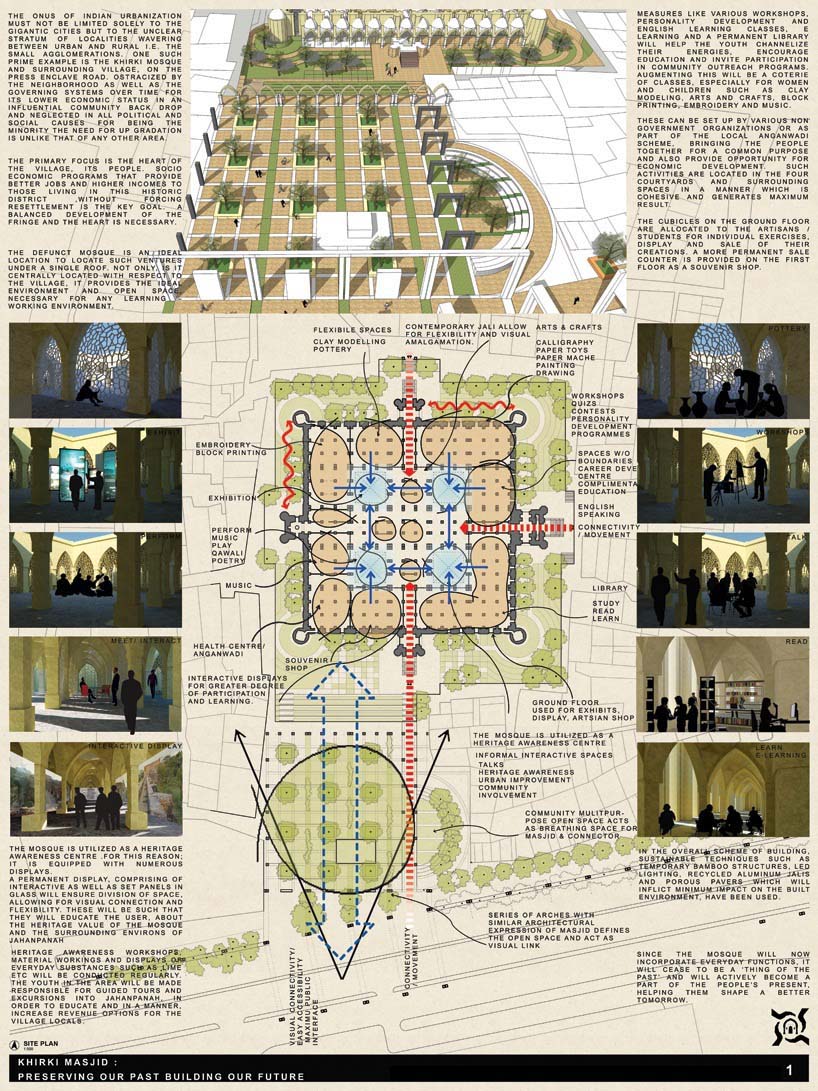
khirki masjid preserving our past building our future by Meenakshi from india
designer's own words:
Of Firoz Shah's numerous mosques, the chief ones are Kali masjid, Begumpuri masjid, Kalan masjid and Khirki masjid at Jahanpanah. This last is interesting not only for its cruciform plan, but also because it is one of the few examples of covered mosques in India. The roofing of the Khirki monument divided the interior spaces into various small courtyards effectively breaking up the congregation into small groups. Whatever the reason for this unusual masjid, it was apparently not very successful as a building type and was not repeated until the advent of the modern style of architecture.
Today the Khirki masjid has its own village - Khirki village - in Delhi, near modern Saket. Indeed, from the road, the mosque can barely be glimpsed. The narrow paths of the village twist and turn until suddenly you are face to face with an imposing structure mounted on an impressively high plinth. The village chokes the mosque, encroaches on its space - but perhaps the very unexpectedness of the building is the reason for its powerful solemnity. The Khirki Masjid today is an architectural gem tucked away in a forgotten corner of one of India's largest metropolises.
The onus of Indian urbanization must not be limited solely to the gigantic cities but to the unclear stratum of localities wavering between urban and rural i.e. the small agglomerations. One such prime example is the Khirki mosque and surrounding village, on the Press Enclave Road. Ostracized by the neighborhood as well as the governing systems over time for its lower economic status in an influential community back drop and neglected in all political and social causes for being the minority the need for up gradation is unlike that of any other area.
The project looks to mend the chasm between the people and the social infrastructure. Beginning with street organization a central green open space is created in front of the mosque for the children to play and for the elders to conglomerate, acting as a transition between the cityscape and the village. This links to the other monument, Satpula, across a heritage trail, winding its way across central Jahanpanah culminating at Kalu Serai Mosque.
For want of greater open spaces, performance areas, parks, multipurpose grounds, horticultural greens and a children’s playground have been incorporated along this trail. The historic value of this precinct will be reinforced by heritage awareness programs, light and sound shows, performance of Qawwalis and poetry, the mosque and Satpula serving as the venue. The two monuments will be added to the list of monuments in Delhi, serviced by the HOHO buses. Cycles, for a nominal fee, will be available at the interpretation centre, near Satpula, to cover the trail. Over time, with the proper conservation measures in place, a jetty service will be set up in Satpula for general boating purposes, supplemented by cafeterias etc.
Public conveniences such as toilets and drinking water are located at strategic points along the Press Enclave Road. Interactive display panels along and across the main road, tying it to the malls across will mark the entry of this facility. Locations beside the road are used to develop kiosks or vendors space over looking the road and the buildings beyond. This with suitable buffer of landscaping will act as a congregation place for the young and help increase business for the people. Often seen sale of handicrafts, potteries etc can be placed along this path, providing them a suitable platform for business. This fringe development will act like cosmetic treatment of the village which is essential to create parity between Khirki and the adjoining localities.
The primary focus is the heart of the village, its people. Socio economic programs that provide better jobs and higher incomes to those living in this historic district ,without forcing resettlement is the key goal. A balanced development of the fringe and the heart is necessary. The defunct mosque is an ideal location to locate such ventures under a single roof. Not only, is it centrally located with respect to the village, it provides the ideal environment and open space, necessary for any learning – working environment.
Measures like various workshops, personality development and English learning classes, e learning and a permanent library will help the youth channelize their energies, encourage education and invite participation in community outreach programs. Augmenting this will be a coterie of classes, especially for women and children such as clay modeling, arts and crafts, block printing, embroidery and music. These can be set up by various non government organizations or as part of the local anganwadi scheme, bringing the people together for a common purpose and also provide opportunity for economic development. Such activities are located in the four courtyards and surrounding spaces in a manner which is cohesive and generates maximum result.
The mosque is utilized as a heritage awareness centre .For this reason; it is equipped with numerous displays. A permanent display, comprising of interactive as well as set panels in glass will ensure division of space, allowing for visual connection and flexibility. These will be such that they will educate the user, about the heritage value of the mosque and the surrounding environs of Jahanpanah.
Heritage awareness workshops, material workings and displays of everyday substances such as lime etc will be conducted regularly. The youth in the area will be made responsible for guided tours and excursions into Jahanpanah, in order to educate and in a manner, increase revenue options for the village locals.
The cubicles on the ground floor are allocated to the artisans / students for individual exercises, display and sale of their creations. A more permanent sale counter is provided on the first floor as a souvenir shop.
In the overall scheme of building, sustainable techniques such as temporary bamboo structures, led lighting, recycled aluminum jails and porous pavers which will inflict minimum impact on the built environment, have been used.
Since the mosque will now incorporate everyday functions, it will cease to be a ‘thing of the past’ and will actively become a part of the people’s present, helping them shape a better tomorrow.
CONCEPT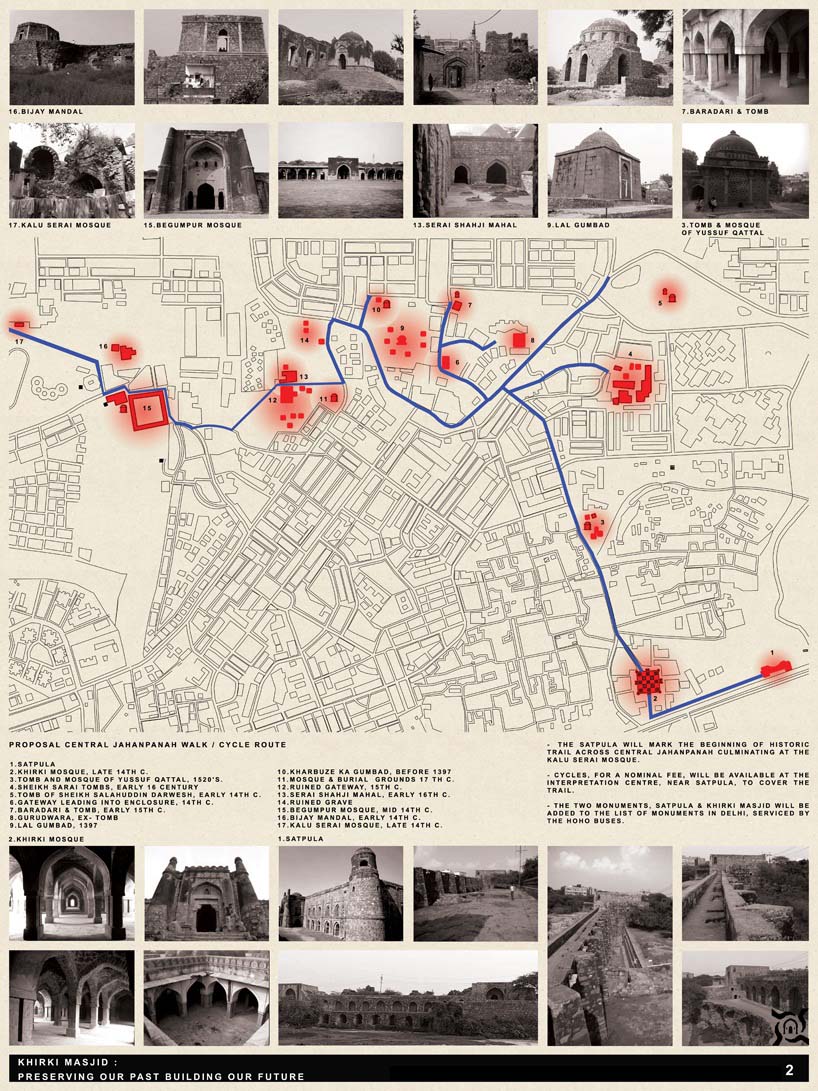 HERITAGE TRAIL
HERITAGE TRAIL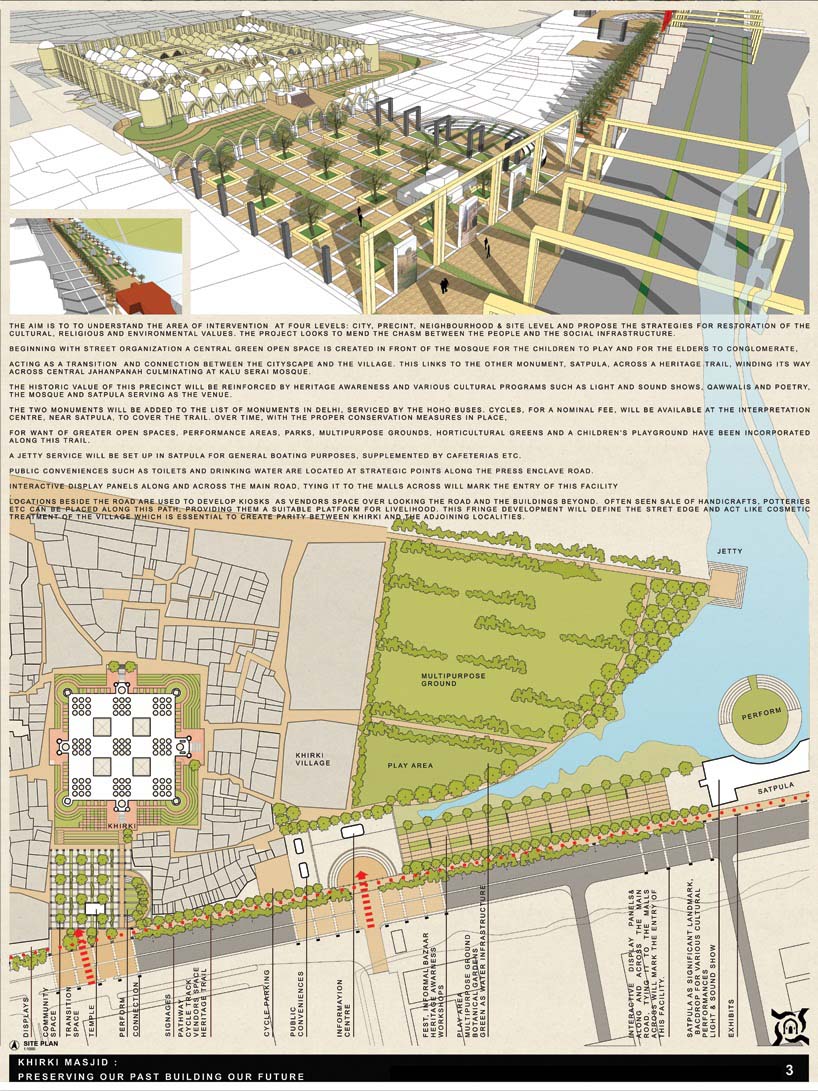 SITE PLAN
SITE PLAN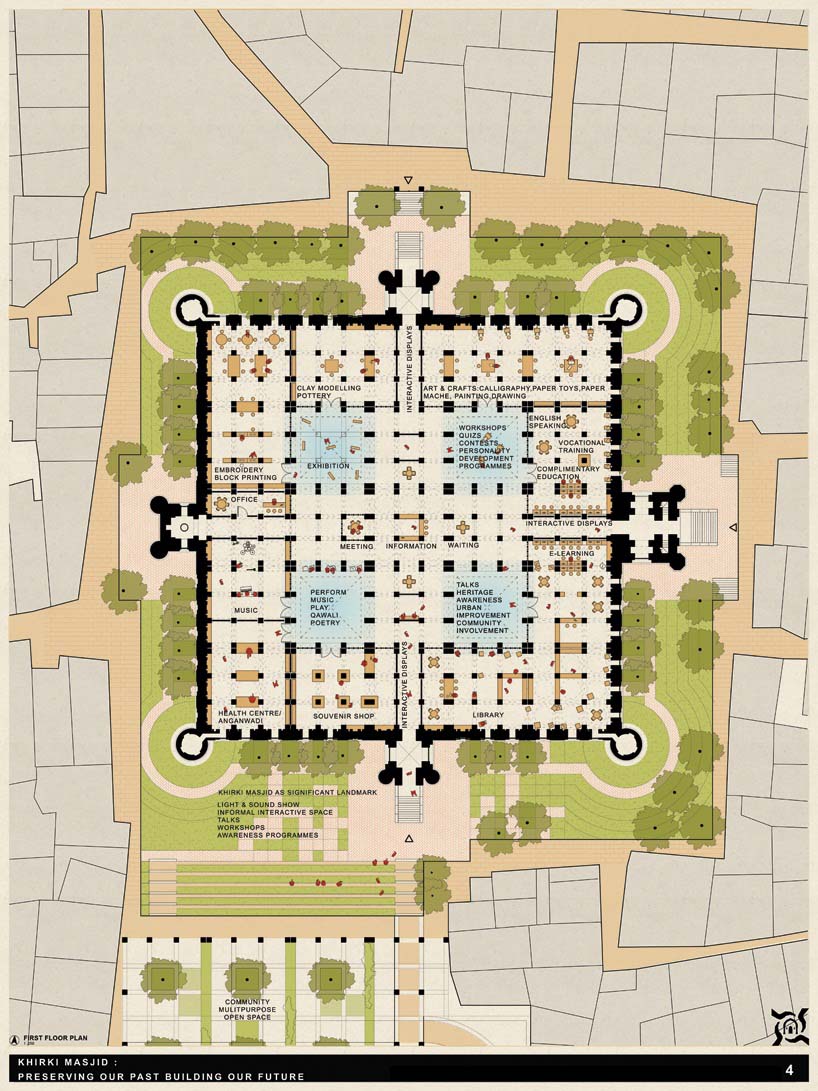 FIRST FLOOR
FIRST FLOOR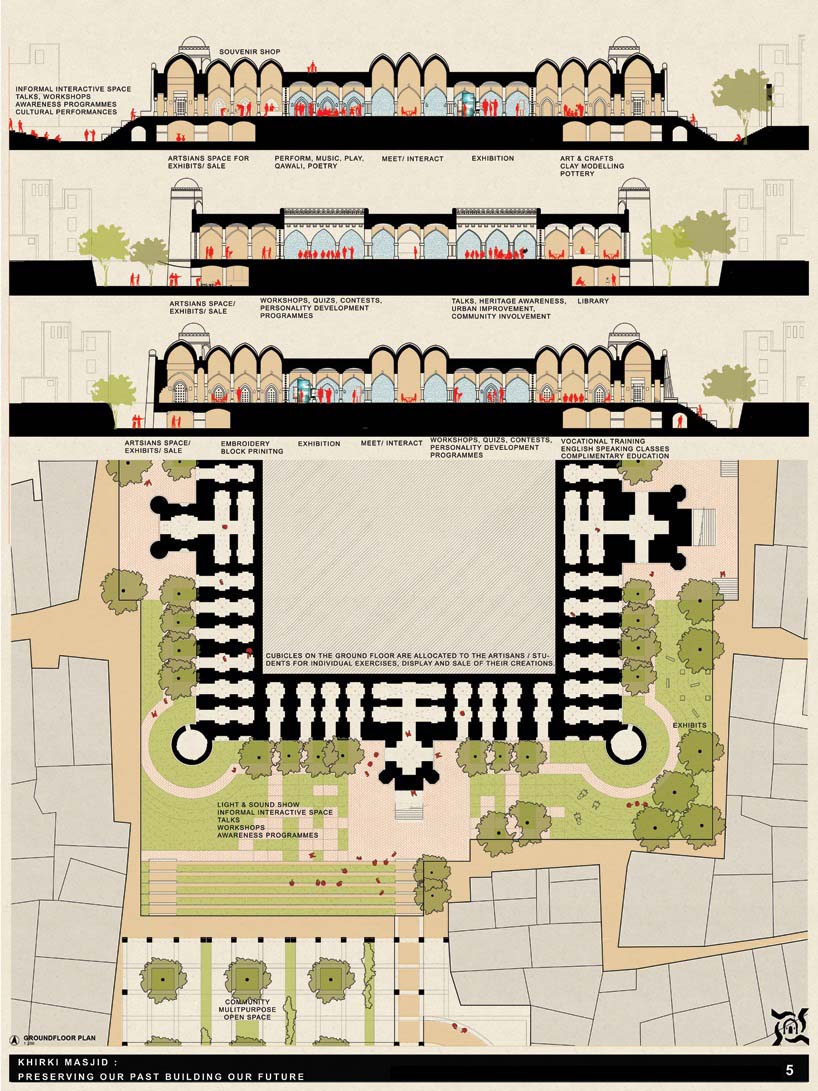 GROUND FLOOR & SECTIONS
GROUND FLOOR & SECTIONS